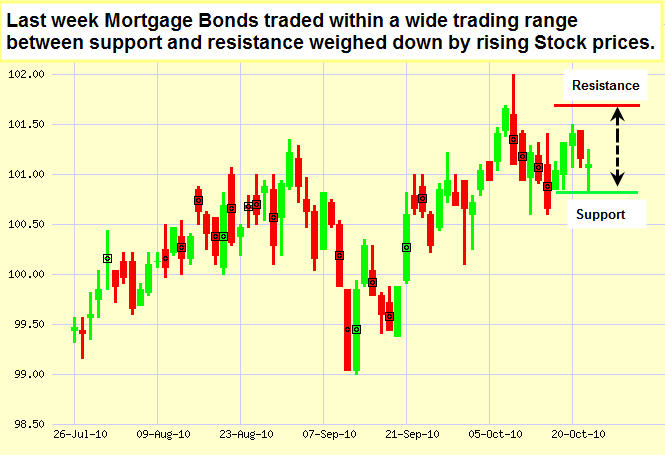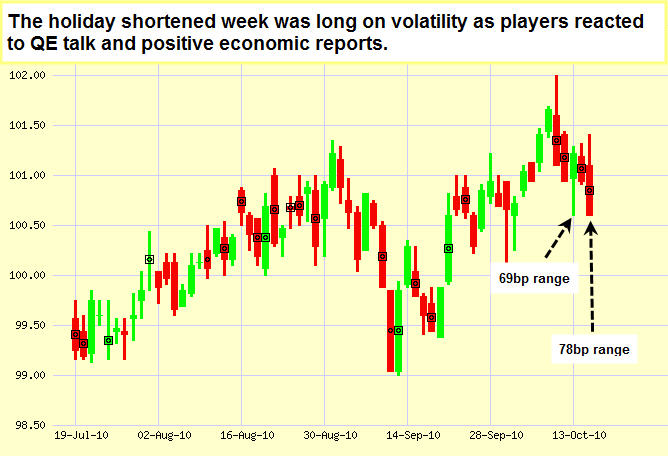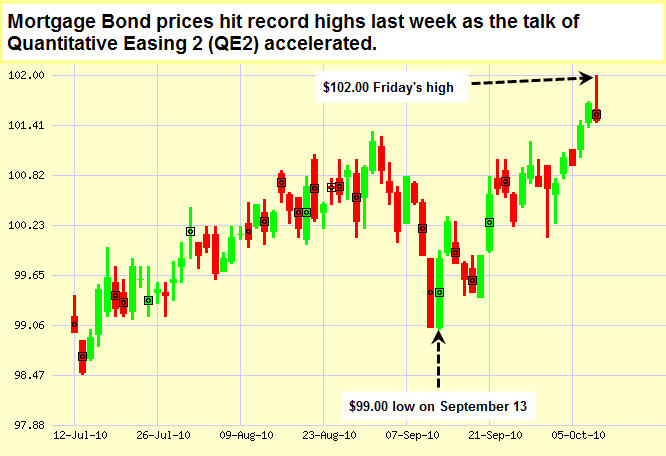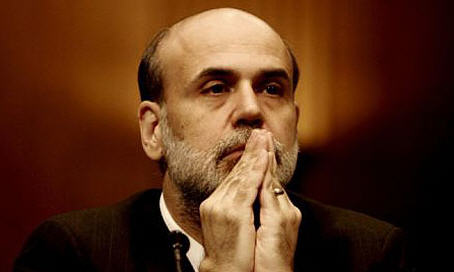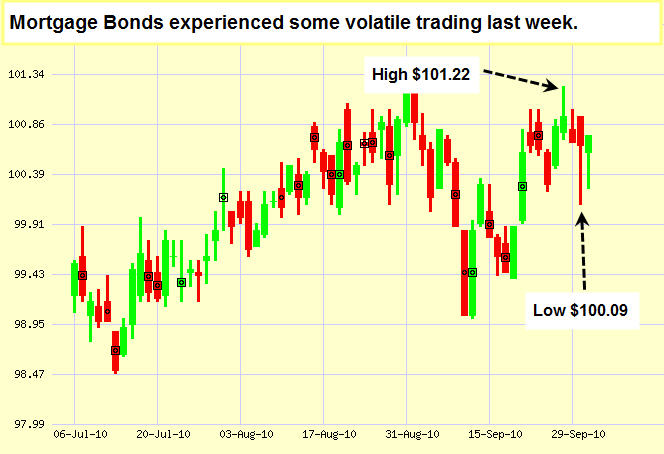|
| ||
| For the week of Oct 25, 2010 --- Vol. 8, Issue 43 |
| In This Issue |
|
|
| Last Week in Review: The positive and negative mix of economic news continues to brew and boil... what’s happening with home loan rates? Forecast for the Week: More news on the housing market is in store - and Stock earnings season continues too – all in advance of the Fed’s important upcoming meeting. View: Halloween candy may be a treat, but an attack on your PC sure isn’t. The cyber-tricksters are out in full force, so check out the View article below for some important information. |
| Last Week in Review |
|
|
| "DOUBLE, DOUBLE TOIL AND TROUBLE; FIRE BURN AND CAULDRON BUBBLE..." No, the witches from Shakespeare’s "Macbeth" weren’t talking about the economy or the labor market – but economic reports of late are indeed swirling about as if in a cauldron, with a potent mix of both tricks and treats. One report will show improvement for the economy, while another tells a more negative tale. So what news came about this week, and what impact did it have on home loan rates? Last week, there was reasonably good news on the housing front, as Housing Starts for September were up 0.3%, to a seasonally adjusted 610,000 unit pace, which was higher than expectations of 579,000. The good news is that this represents the third consecutive month of expansion and actually the highest level of Housing Starts since April. Yet, while this is an encouraging sign and does suggest some stabilization in housing, we can't break out the party hats just yet. The improvement in Housing Starts is coming off of very depressed levels... and additionally, Building Permits, which are a sign of future construction, came in at 539,000, which was below expectations and also the lowest level we’ve seen in more than a year. The bottom line for housing is that people need to gain back real confidence and security about their job and economic prospects before we'll see a marked turn around. Speaking of that important job market, last week’s Initial Jobless Claims were 452,000 – and Jobless Claims have been stuck near that 450,000 mark for a long time - and there will be no meaningful decrease in the Unemployment Rate until Initial Jobless Claims reach and start moving below the 400,000 level. Overall, we still have 8.5 million people collecting some sort of unemployment benefits, so we’ve still got a ways to go before we’re out of the woods. Reports on housing, manufacturing, jobs, and inflation are a big part of what will guide the Fed’s ultimate decision regarding the next round of Quantitative Easing (QE2), and a formal announcement is expected during the Fed’s next meeting of the Federal Open Market Committee on November 3rd. Remember that QE is the concept of the Fed becoming a buyer of Treasuries and Bonds, in a bid to keep interest rates low and therefore stimulate the economy. It’s important to note that QE may also devalue the Dollar, and boost our economy through making our exports relatively cheaper for foreign buyers. And this is not a bad thing, but we have to be aware that while more QE might provide an initial decline for home loan rates, the devaluation of the Dollar will ultimately drive rates higher. I will be watching this situation closely in the weeks ahead. Meanwhile, last week’s news caused both ups and downs for Bonds and home loan rates, and they ultimately ended the week about the same as where they began. If you – or a client, friend, family member, neighbor, coworker – would like to learn more about taking advantage of historically low home loan rates, please don’t hesitate to call or email me. It would be an honor to provide a free consultation for you or any of your contacts. HALLOWEEN MAY BE A BIT SPOOKY…BUT A CYBER ATTACK ON YOUR COMPUTER IS DOWNRIGHT GHOULISH! CHECK OUT THE MORTGAGE MARKET GUIDE VIEW FOR SOME SIMPLE STEPS TO HELP KEEP YOUR DATA SAFE. |
| Forecast for the Week |
|
|
| Also, we'll get a read on the health of the economy with Wednesday’s Durable Goods Report, which gives us an update on consumer and business buying behavior on big-ticket items that are designed to last for an extended period of time, like furniture, televisions, appliances, sporting equipment, vehicles, copy machines... all manner of things. It’s an interesting report, as people tend to hold back on these types of purchases when they are feeling a need to be extra conservative with their finances, or feel insecure about their employment. Meanwhile, Friday will bring another read on the economy with the Gross Domestic Product Report, which is the broadest measure of economic activity. And not to be missed is the Initial and Continuing Jobless Claims Report on Thursday, as well as earnings reports from Proctor & Gamble, 3M, Exxon Mobile and more. Remember: Weak economic news normally causes money to flow out of Stocks and into Bonds, helping Bonds and home loan rates improve, while strong economic news normally has the opposite result. As you can see in the chart below, Bonds and home loan rates moved up and down due to movement in the Stock market and other economic news. I’ll be watching closely to see what happens this week.
Chart: Fannie Mae 3.5% Mortgage Bond (Friday, October 22, 2010)
|
| The Mortgage Market Guide View... |
|
|
NOTE: THIS IS A CONFIDENTIAL AND PRIVILEGED COMMUNICATION. This transmission is intended only for use by the individuals or entities to which it is addressed, and contains confidential and/or privileged information. If the reader of this message is not the intended recipient, or the employee or agent responsible for delivering the message to the intended recipient, you are hereby notified that any dissemination, distribution or copying of this communication is strictly prohibited. If you have received this communication in error, please send a reply to us and permanently delete the e-mail from your computer.

